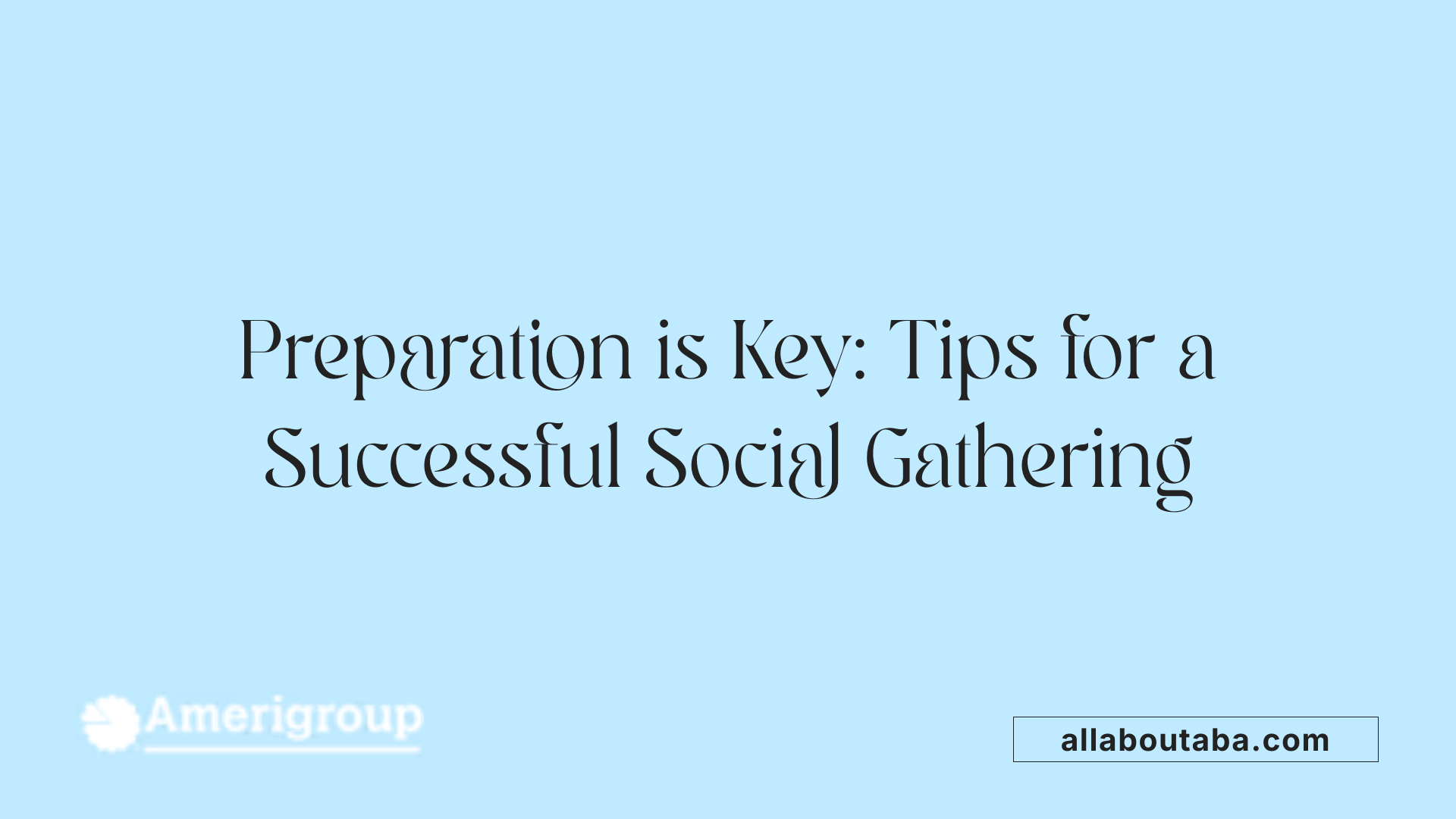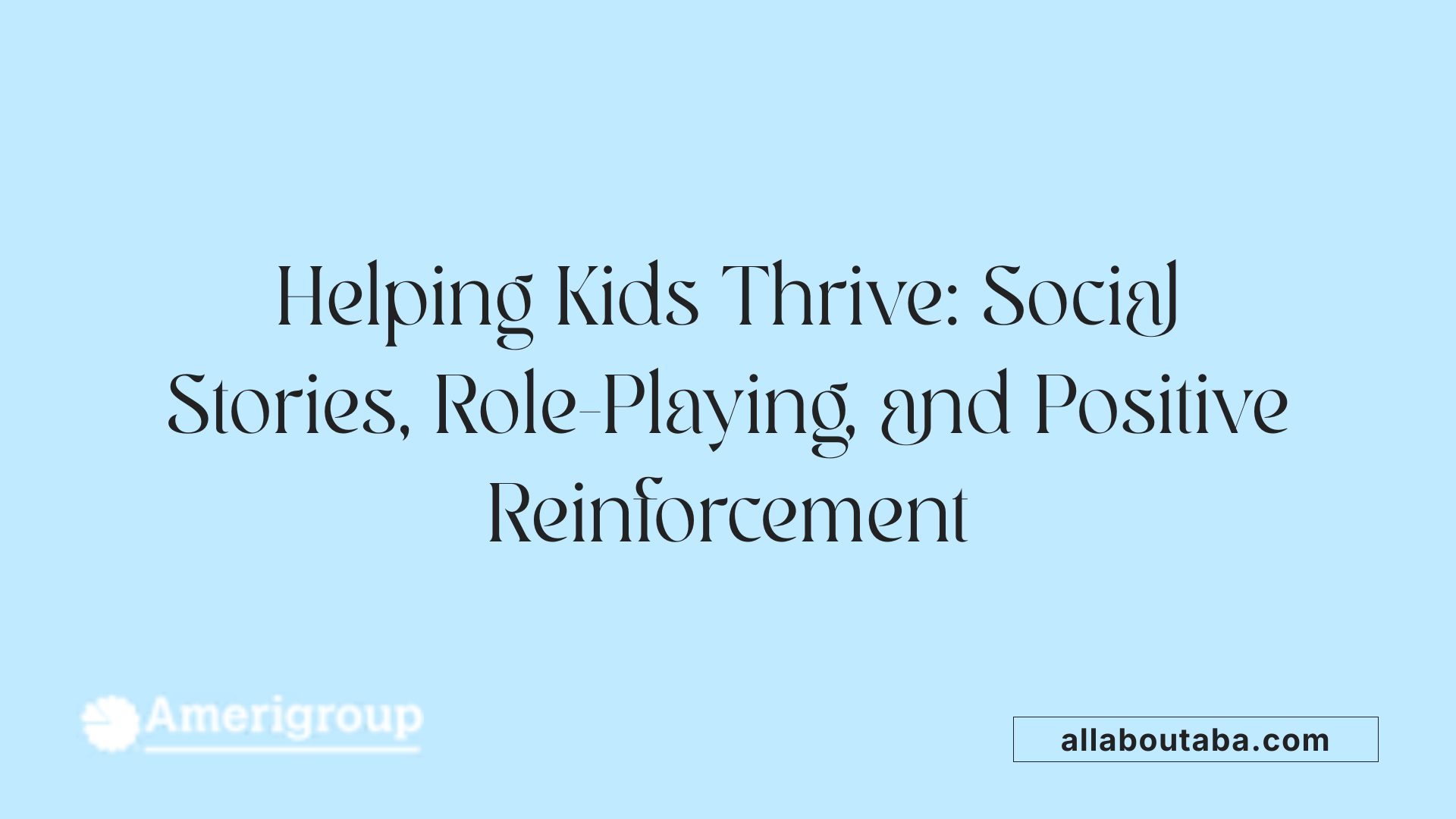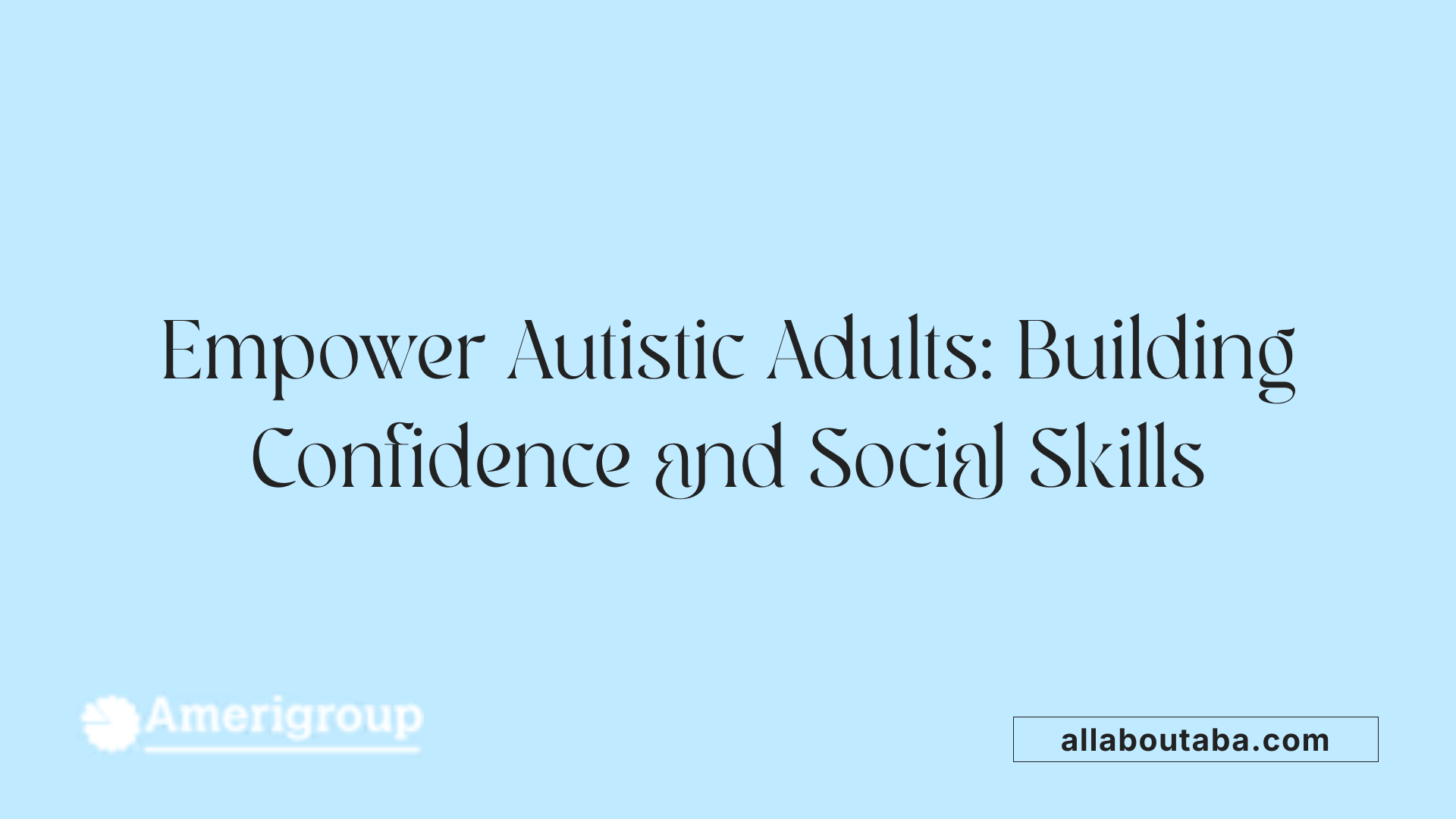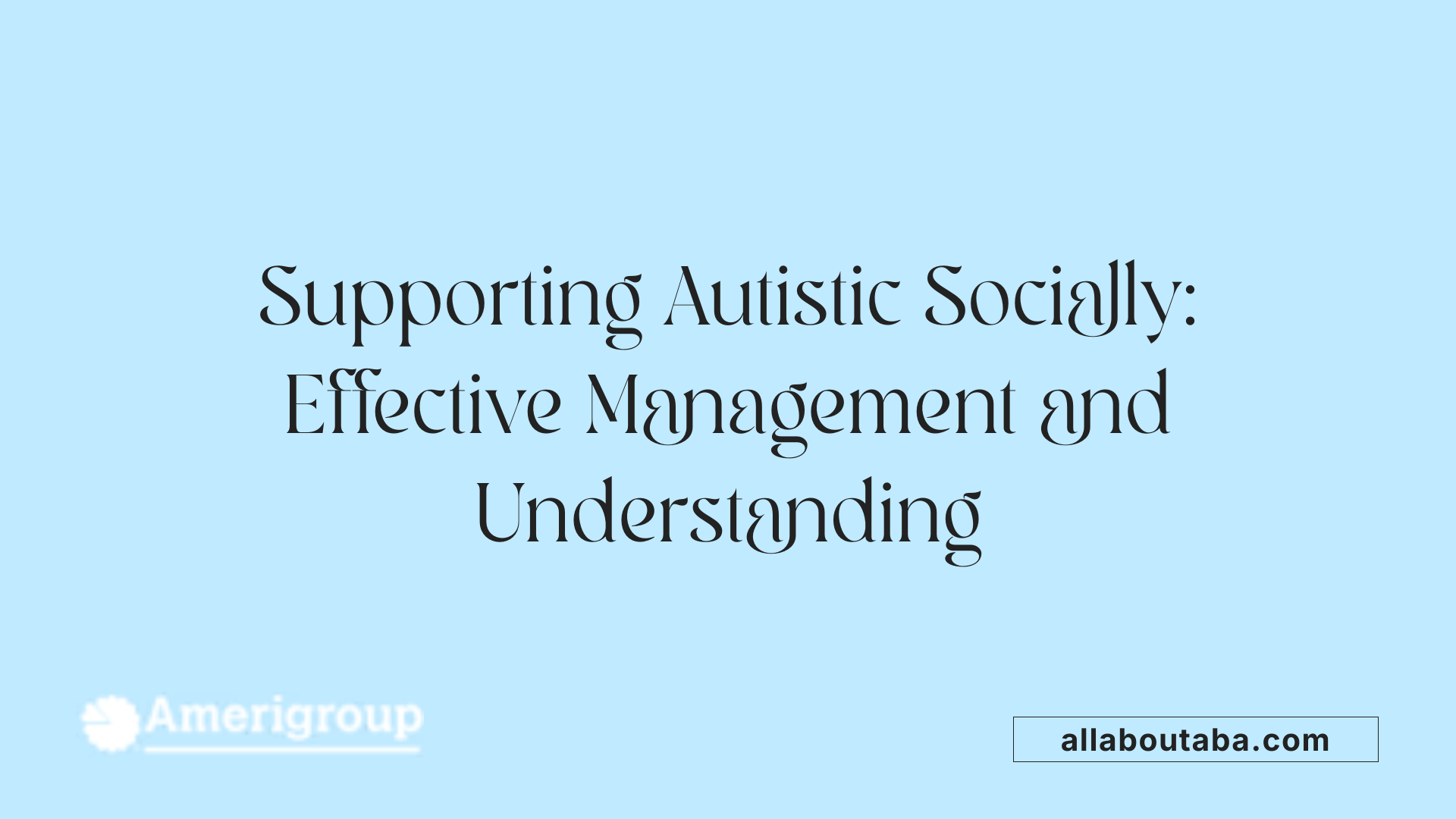Autism And Strategies For Navigating Large Social Gatherings
Understanding the Challenges and Effective Strategies
Large social gatherings can be overwhelming for many autistic individuals, often due to sensory sensitivities, communication difficulties, and social anxiety. Recognizing these challenges and implementing thoughtful strategies can foster more inclusive and positive experiences. This article explores practical approaches, from preparing in advance to utilizing supportive tools, to help autistic individuals navigate social events confidently.
Preparing for Social Gatherings: Setting the Stage for Success
 Large social gatherings can be overwhelming for many autistic individuals due to sensory sensitivities and social challenges. To help create positive experiences, planning ahead is essential.
Large social gatherings can be overwhelming for many autistic individuals due to sensory sensitivities and social challenges. To help create positive experiences, planning ahead is essential.
Effective strategies include communicating with the event hosts in advance. Sharing information about personal needs, preferred activities, and sensory sensitivities can help hosts accommodate and support neurodiverse guests better.
Using visual supports like social stories or schedules can prepare individuals for what to expect during the gathering. Showing short clips or pictures of similar parties can help individuals understand social patterns, such as greeting others, participating in group activities, or navigating noise levels.
Bringing sensory tools, like noise-canceling headphones, fidget toys, or calming scents, provides comfort during moments of overwhelm. Establishing a designated sensory area or quiet space within the venue can offer a refuge for self-regulation.
Taking breaks and having an exit plan are vital. Setting a time limit on participation or identifying a trusted person to leave early if needed prevents exhaustion and stress.
Building rapport with familiar people at the event, such as a trusted friend or family member, can facilitate social engagement. Engaging in familiar activities, like playing with pets or children, offers low-pressure ways to participate.
Choosing a buddy or support person can make a significant difference. They can help interpret social cues, provide reassurance, and assist in navigating the environment.
Clear communication of personal needs and gentle boundary-setting ensure comfort. Observing one's own limits is crucial—if feelings of overwhelm arise, taking a step back helps maintain a positive experience.
Overall, tailoring the environment to individual preferences, practicing social scenarios beforehand, and fostering supportive interactions create a more manageable and enjoyable social experience for autistic individuals.
Supporting Autistic Individuals During Social Events
What practical tips can support autistic individuals during social settings?
Supporting autistic individuals at social gatherings involves thoughtful planning and accommodating their needs. One effective approach is using clear, direct communication. Incorporating visual supports like social stories, visual schedules, or prompts can help clarify what to expect, reducing anxiety and confusion.
Creating sensory-friendly environments is also crucial. This can mean dimming lights, providing noise-canceling headphones, or designating quiet spaces where individuals can take breaks when overwhelmed. Paying attention to individual sensory sensitivities—such as bright lights, loud sounds, or strong smells—helps prevent overload.
Building social skills goes beyond just support during the event. Participating in structured groups or activities that mimic real-life situations allows for gradual learning and confidence-building. Techniques like role-playing or rehearsing social scenarios can make interactions smoother.
Understanding each person’s unique way of communicating—be it through gestures, facial expressions, or alternative methods—enables more respectful and effective engagement. Support from friends, family, or caregivers in practicing these skills in low-pressure settings is beneficial.
Remaining patient, establishing routines, and learning about interested topics foster trust and comfort. Offering choices and respecting boundaries also empower autistic individuals to participate meaningfully.
In summary, applying visual tools, ensuring sensory comfort, and providing opportunities for skill development can greatly enhance social experiences for autistic individuals, helping them navigate social gatherings with confidence and ease.
Facilitating Social Engagement in Crowded Spaces

How can social engagement be facilitated for autistic individuals in crowded environments?
Supporting autistic individuals to engage socially in crowded settings involves multiple thoughtful strategies. One effective approach is to establish structured routines and use visual supports to create predictability. Visual schedules, social stories, and clear guidelines help individuals understand what to expect, reducing anxiety and helping them participate more comfortably.
Programs like PEERS (Program for the Evaluation and Enrichment of Relationship Skills) offer peer-mediated interventions that teach social skills through practice and modeling. These programs foster natural interactions and provide a safe environment for learning appropriate social behaviors.
Sensory accommodations are also critical. Adjusting the environment with quieter spaces, dimmed lights, or sensory tools like noise-canceling headphones can make busy places more manageable. Tailoring communication strategies to individual needs, such as using augmentative communication devices or simple language, supports better understanding and interaction.
Pairing autistic individuals with understanding peers or facilitators serves as a positive model and helps build confidence. Such support provides direct guidance during social encounters, which can lead to more successful interactions.
Using social narratives or stories in advance prepares individuals for what they might encounter, helping them understand social cues and expectations. Combining these tools with patience, respect, and flexibility, communities can create more inclusive environments where autistic individuals feel comfortable participating in social activities.
| Strategy | Description | Benefit |
|---|---|---|
| Visual supports | Visual schedules, social stories, clear labels | Reduce anxiety, increase predictability |
| Peer-mediated interventions | Programs like PEERS that include peers in social skills development | Enhance social skills through modeling and practice |
| Sensory accommodations | Quiet rooms, sensory tools, environment adjustments | Minimize sensory overload, promote comfort |
| Personalized communication | Use of communication aids, simple language, tailored messaging | Improve understanding and interaction |
| Naturalistic teaching | Real-life social practice, guided interactions | Build confidence and practical skills |
By combining these tailored approaches, autistic individuals can find more opportunities for social engagement and experience greater inclusion in crowded environments.
Helping Children with Autism Manage Social Challenges

Use of social stories and visual schedules
Implementing social stories and visual schedules can significantly aid children with autism in understanding social events and expectations. Social stories are short, simple narratives that describe specific social situations, helping children anticipate what will happen and what behavior is expected. Visual schedules, on the other hand, outline the sequence of activities during an event, providing a visual roadmap that reduces anxiety and increases predictability.
These tools serve as effective pre-event preparations, allowing children to process the upcoming social setting at their own pace. Consistent use of visual supports helps reinforce routine, improve communication, and build confidence in navigating social interactions.
Structured social skills training and role-playing
Structured training sessions, often led by therapists or teachers, focus on teaching fundamental social skills in a controlled environment. These sessions may include modeling appropriate behavior, practicing in role-playing scenarios, and using peer-led activities to simulate real-life social situations.
Role-playing, in particular, allows children to rehearse reactions, recognize emotions, and learn their responses through interactive and engaging methods. Breaking social skills into small, manageable steps makes it easier for children to learn and apply them during actual events.
Reinforcing positive social behaviors and involving peers
Positive reinforcement encourages children to repeat desirable social behaviors. Using specific praise, rewards, or tokens can motivate children to participate actively in social interactions.
Involving peers in structured activities promotes natural social engagement and reduces feelings of isolation. Peer models can demonstrate appropriate behaviors and serve as social anchors, making children with autism feel more comfortable and included.
| Strategies | Descriptions | Benefits |
|---|---|---|
| Visual supports | Social stories and schedules | Reduce anxiety, increase predictability |
| Role-playing | Simulated social scenarios | Practice skills in safe environment |
| Positive reinforcement | Praise and rewards | Motivate ongoing engagement |
| Peer involvement | Inclusion in activities | Promote natural interactions |
By combining these approaches, children with autism gain the tools and confidence needed to navigate social challenges more effectively, leading to more positive experiences during social gatherings.
Enhancing Social Skills in Autistic Adults During Gatherings

How can social skills be understood and improved in autistic adults during large gatherings?
Supporting social skill development in autistic adults, especially during large social gatherings, involves a variety of strategies tailored to individual needs. One effective approach is providing explicit instructions and practicing social scenarios in real-life settings. This can include role-playing activities, social skills groups, or community programs that focus on understanding social cues, turn-taking, and appropriate responses.
Using personalized visual aids and social stories can help clarify what to expect during a gathering. These tools make social expectations tangible and predictable, which helps reduce anxiety and build confidence. For example, visual schedules showing the sequence of events can prepare an individual for what they will experience, making social situations less overwhelming.
Supporting self-awareness and self-esteem is also vital. Encouraging individuals to recognize their own feelings and sensory needs allows them to advocate for themselves effectively. When anxiety arises, whether from sensory overload or social uncertainty, professional support such as counseling can provide techniques to manage these feelings.
A neurodiversity-affirming perspective fosters authentic interactions by respecting how autistic adults communicate and socialize naturally. Emphasizing community engagement within autistic groups and networks allows individuals to connect in environments where mutual understanding and acceptance thrive.
Overall, improving social skills for autistic adults is about combining structured, supportive strategies with encouragement for authenticity. This approach not only helps navigate large gatherings comfortably but also promotes positive self-image and genuine relationships.
Guidance for Managing Behaviors and Supporting Social Understanding

What guidance is available for managing behaviors and supporting social understanding in autistic children and adults during social events?
Supporting autistic individuals during social gatherings involves personalized strategies that foster understanding and positive behaviors. One highly effective approach is the use of visual aids like social stories and visual schedules. These tools provide clarity about what to expect, helping reduce anxiety and prepare individuals for specific events.
Structured practices and real-life exposure are essential for developing social skills. Engagement in social skills groups or developmental therapies, such as speech and occupational therapy, allows for targeted learning of social cues, turn-taking, and communication techniques in a controlled environment.
Creating a person-centered, supportive setting is crucial. Respecting each individual’s unique needs, strengths, and boundaries promotes dignity and confidence. Reinforcing positive behaviors with encouragement and consistency fosters lasting improvements.
Consulting with professionals ensures that interventions are evidence-based and tailored appropriately. Resources like NICE guidelines offer valuable advice on safe and effective strategies for enhancing social skills and emotional well-being.
Overall, combining visual supports, structured practice, and professional guidance provides a comprehensive framework that helps autistic individuals navigate social situations more comfortably and confidently.
Building a Supportive, Inclusive Social Environment
Supporting autistic individuals in large social gatherings involves a blend of preparation, environmental accommodations, personalized communication, and ongoing practice. By fostering understanding, patience, and inclusive strategies, families, friends, and communities can create meaningful opportunities for social interaction that respect individual needs and strengths. Emphasizing authenticity and self-advocacy encourages autistic individuals to engage confidently and comfortably, enriching the social fabric for everyone involved.
References
- Strategies to help navigate gatherings
- Navigating Holiday Parties - Autism Society of NC
- Making friends - a guide for autistic adults
- Autism and Making Friends: Real Strategies for Connection
- Navigating Autism Friendship Challenges
- Navigating Holidays with Ease: Tips for Families with ASD
- How To Handle Socially Inappropriate Behavior in Public
- Tips for Meetings, Social Outings & Events
- Enhancing Social Facilitation for Individuals with Autism
Other articles
Recent articles

Best Ways To Foster Collaboration Between Parents And Schools For Autism Support

Supporting Autistic Children During Transitions Between Activities

The Role Of Teachers In Fostering Autism Peer Acceptance

Using Art Therapy To Support Children With Autism

Autism And Strategies For Addressing Sensory Defensiveness

Autism And The Benefits Of Structured Leisure Activities

How To Support Autistic Students During Exam Season

Autism And Goal Setting For Personal Growth

How To Use Gamification In Autism Learning Programs

How Schools Can Reduce Bullying Of Autistic Students

Early Intervention Strategies For Autism Spectrum Disorder

The Role Of Therapists In Autism Life Skills Coaching

How To Support Autistic Individuals In Crisis Situations

Autism And Self-Care Routines For Stress Management

Understanding Echolalia And Its Role In Autism Communication

Autism And Fine Arts Education Benefits

The Impact Of Multisensory Learning On Autism Education

How Family Counseling Supports Autism Household Dynamics

Best Practices For Inclusive Playgrounds For Autism

Best Practices For Autism-Friendly Shopping Centers

How Autism Affects Fine Motor Skill Development

Best Ways To Introduce Sensory Activities Into Daily Routines

How Sports Teams Can Be Inclusive Of Autistic Players

Autism And Strategies For Building Workplace Resilience

Autism And The Impact Of Hormonal Changes During Puberty

How To Support Autistic Students In Foreign Language Classes

Best Ways To Teach Money Skills To Teens With Autism

Supporting Siblings Of Children With Autism

Autism And Co-Occurring Gastrointestinal Disorders

The Role Of Art Projects In Autism Sensory Integration

How Schools Can Incorporate Sensory Break Spaces

Best Practices For Autism Sensory Regulation At School

Autism And Strategies For Teaching Organizational Skills

Understanding The Relationship Between Autism And Anxiety Disorders

Autism And Life Planning For Long-Term Care

Exploring Visual Supports In Autism Education

Ways To Encourage Social Interaction In Children With Autism

The Connection Between Autism And Dyscalculia

The Role Of Occupational Therapy In Transition Planning For Autism

The Role Of Physical Therapists In Autism Motor Skills Support

How To Teach Decision-Making Skills To Autistic Young Adults

The Connection Between Autism And Epilepsy

Best Practices For Transitioning Autistic Children Into New Schools

Autism And Time Management Challenges In Adulthood

The Role Of Visual Arts In Autism Communication Development

How To Address Tactile Defensiveness In Autism

Best Practices For Telehealth Autism Therapy

How To Help Autistic Children Develop Friendship Skills

How Schools Can Support Autistic Students In Career Prep

Best Strategies For Autism-Friendly Event Planning

Understanding Noncontingent Reinforcement In Autism Behavior Plans

How Drama Therapy Benefits Autistic Individuals

Best Practices For Autism-Friendly Fitness And Recreation Centers

Best Ways To Promote Healthy Social Media Use For Autistic Teens

How To Help Autistic Children Cope With Public Speaking

Autism And Strategies For Managing Unexpected Changes

Best Podcasts About Autism For Parents And Educators

Autism And The Impact Of Seasonal Changes On Behavior

The Role Of Diet In Managing Co-Occurring Conditions With Autism

Sleep Challenges In Autism And Practical Solutions

Best Ways To Build Daily Routines For Autistic Children

Best Practices For Supporting Autistic Entrepreneurs

Autism And Strategies For Navigating Large Social Gatherings

Adaptive Sports And Recreational Activities For People With Autism

Autism And The Benefits Of Story-Based Learning Activities

Understanding The Role Of Play In Autism Development

Autism And The Impact Of Environmental Noise On Learning

How To Create Autism-Friendly Community Spaces

Autism And Chronic Health Conditions: What To Know

The Role Of Care Managers In Autism Life Planning

How To Teach Social Boundaries To Autistic Children

How Autistic Individuals Experience Empathy Differently

How To Support Autistic Employees In Remote Work Settings

Autism And The Relationship Between Motor Skills And Learning

How To Create Community Resource Guides For Autism Families

How To Teach Daily Living Skills To Autistic Teens

Autism And The Impact Of Mind-Body Practices On Stress Reduction

Autism And The Benefits Of Outdoor Group Activities

How To Create Autism-Friendly Sensory Paths In Schools

Best Practices For Autism-Friendly Park And Recreation Areas

Autism And Strategies For Reducing School Refusal

Supporting Autistic Individuals In Public Speaking

The Role Of Diet In Managing Autism Symptoms

The Benefits Of Gardening Clubs For Autism Social Development

How To Prepare Autistic Children For Dental Visits

Autism And Employment: Career Paths That Work

Best Practices For Autism-Friendly Hotels And Lodging

The Impact Of Screen Time On Autism Development

Autism Screening Tools For Early Childhood

The Role Of Physical Exercise In Autism Therapy

Best Strategies For Supporting Autistic College Students

The Role Of Technology In Autism Early Detection

Sensory-Friendly Classroom Design Ideas For Autistic Students

The Role Of Speech Therapy In Building Social Communication Skills

Best Strategies For Handling Autistic Burnout In Adults

Autism And The Importance Of Predictability In Routine

Autism And Peer Education: Teaching Acceptance In Schools

Best Practices For Sensory-Friendly Libraries And Reading Rooms

Self-Advocacy Skills For Autistic Adults

The Role Of Technology In Autism Peer Communication
We’re All About You, Your Family, and Your Child

